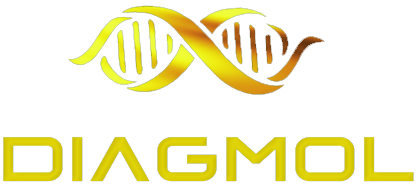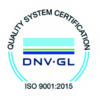HPV HR 14 – genotypowanie ( 14 typów wysokiego ryzyka 16, 18, 31, 33, 35, 39, 45, 51, 52, 56, 58, 59, 66, 68)

It is worth being aware of the dangers of the human papillomavirus (HPV). Appropriate tests allow to diagnose an infection, which in consequence can even lead to the initiation of a cancer process, such as, for example, cervical cancer. High-oncogenic viruses – most often causing cancerous changes – are detected by means of specialized tests to determine whether one is dealing with HPV variants 16, 18, 31, 33 or 45.
Detection and genotyping of human papillomavirus
The offered test allows you to identify HPV types 16, 18, 31, 33, 35, 39, 45, 51, 52, 56, 58, 59, 66 and 68. With this method, it is also possible to genotyping them, which is of great importance in the context of future treatment. Of the known variants of HPV, many cause only harmless and often self-resolving clinical symptoms. Proper diagnosis of HPV allows to detect both high-risk genotypes, causing, among other things, the development of cervical cancer, and low-risk genotypes, which lead to milder changes.
Confirmation of HPV
The test we perform is based on the use of the qPCR method. The result of the study is information on the presence of human papillomavirus in the body. All the HPV types listed above are detected and it is possible to determine whether any of the high-oncogenic variants are present. The result of the diagnosis received will therefore contain information on which of the HPV variants (16, 18, 31, 33, 35, 39, 45, 51, 52, 56, 58, 59, 66, 68) has been identified in the collected material – then we are talking about a positive result. However, a negative result should be interpreted as the absence of the virus or its presence below the detection threshold. Then the clinical significance is negligible.
Otrzymany przez Państwa rezultat diagnozy będzie zawierał więc informację, który z wariantów HPV (16, 18, 31, 33, 35, 39, 45, 51, 52, 56, 58, 59, 66, 68) został zidentyfikowany w pobranym materiale – wówczas mowa o wyniku pozytywnym. Natomiast wynik negatywny należy interpretować jako brak wirusa lub jego obecność poniżej progu detekcji. Wtedy znaczenie kliniczne jest znikome.
220.00 zł
Why is it worth testing?
Method
The test allows to detect, using the qPCR DNA HPV method, highly oncogenic types: 16, 18, 31, 33, 35, 39, 45, 51, 52, 56, 58, 59, 66, 68 in the tested material.
Indications for performing the test
- Lesions in the genital/anal environment
- Recurrent inflammation of the urinary system
- Intermenstrual bleeding
- Vaginal discharge
- Casual relationship
- Multiple sexual partners
- Planning a permanent relationship
- Decreased immunity
- Pregnancy planning
- Miscarriage episodes or ectopic pregnancy
In the case of head and neck cancers, detection of the presence of HPV is a prognostic factor.
How to take
Self-collection - cervix
Collection kit - cervix - the test material should be collected by a gynecologist using the kit provided
Still in doubt? Any questions?
We encourage you to contact us to resolve any doubts!
Napisz do nas, korzystając w formularza lub umów bezpłatną wstępną konsultacje






